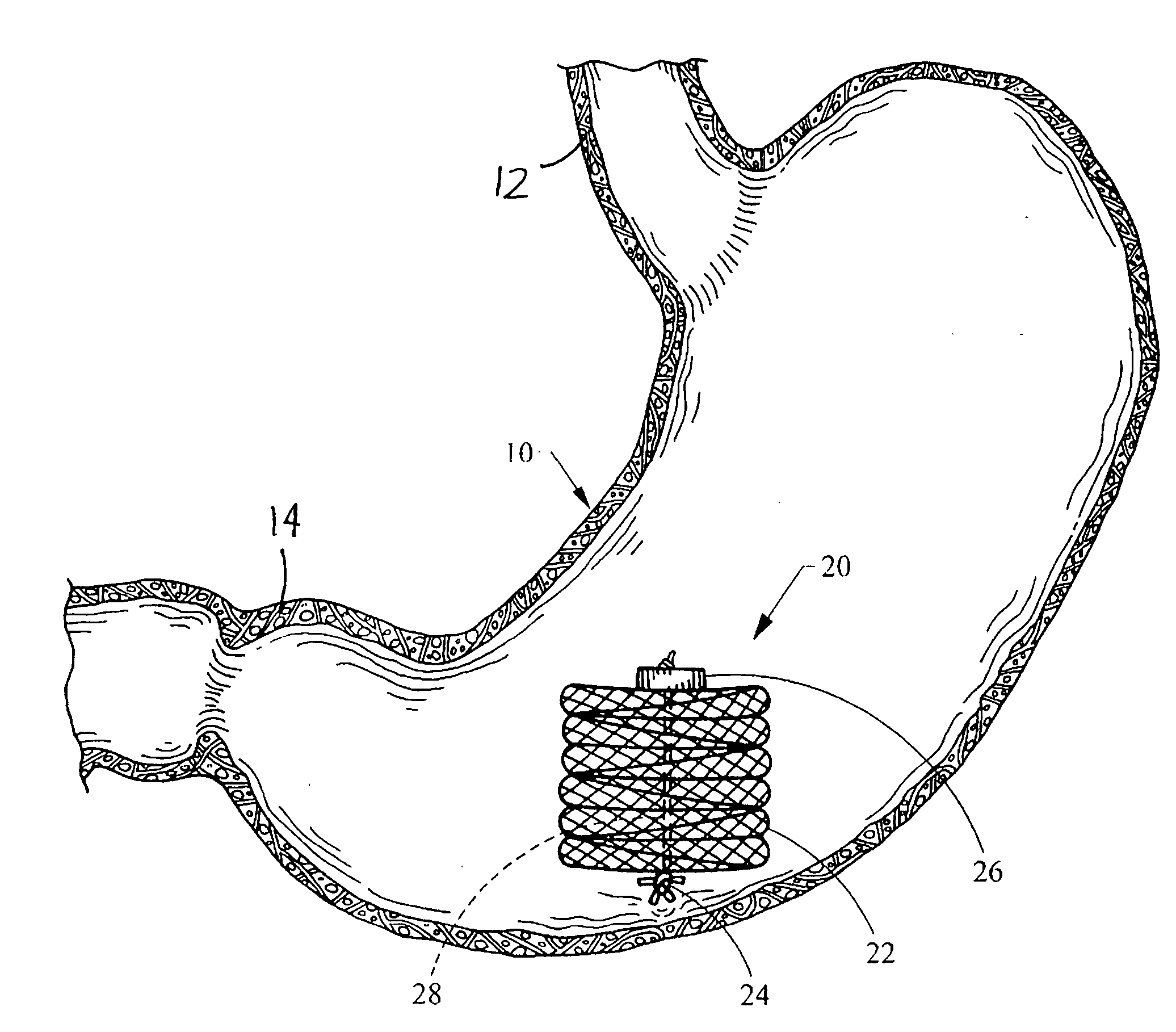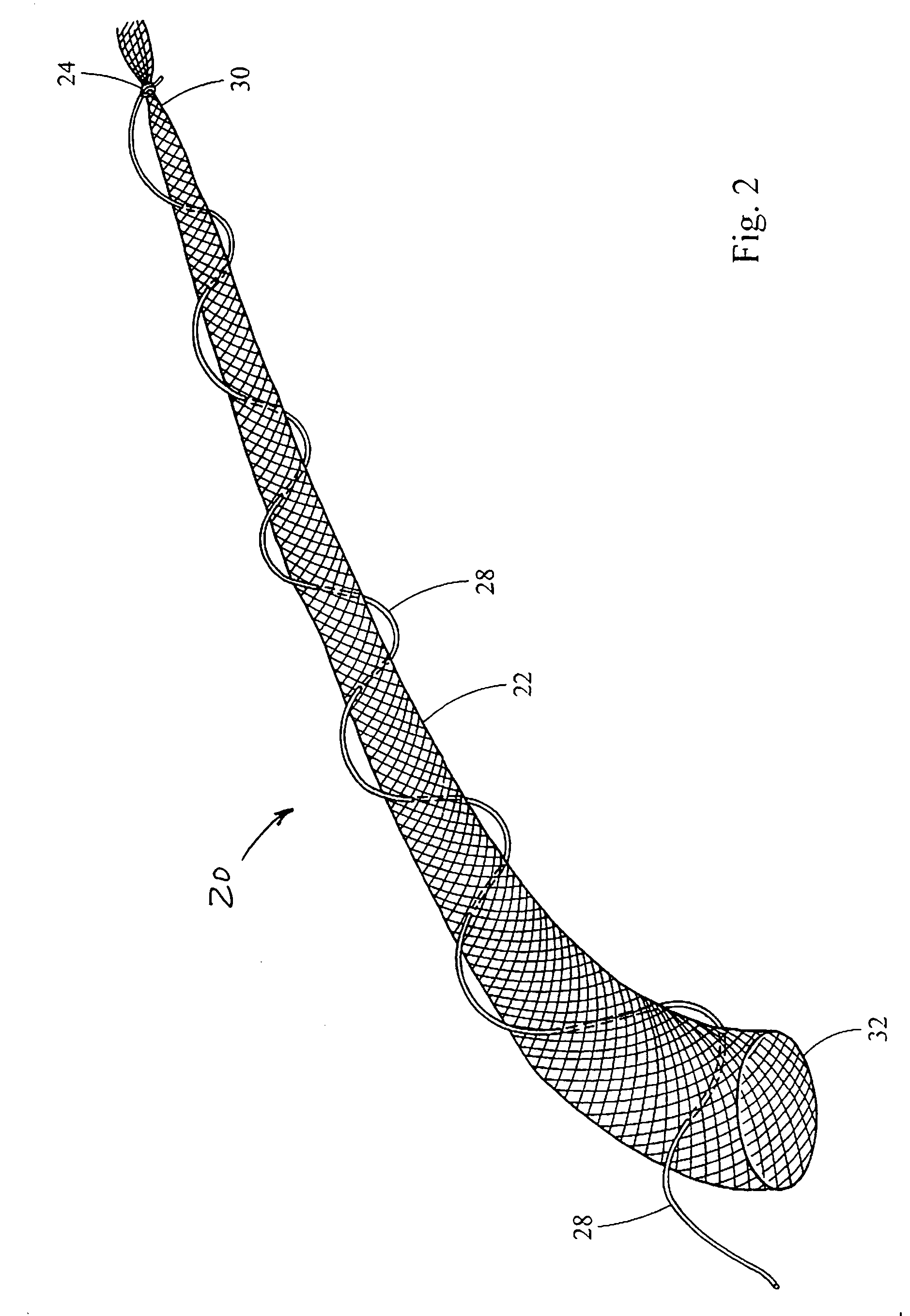Intragastric device for treating obesity
a technology of intragastric devices and obesity, applied in the field of medical devices, can solve problems such as no reduction in efficacy
- Summary
- Abstract
- Description
- Claims
- Application Information
AI Technical Summary
Benefits of technology
Problems solved by technology
Method used
Image
Examples
Embodiment Construction
[0031] Turning now to the figures, FIGS. 1-4 depict an intragastric device 20 for treating obesity, constructed in accordance with the teachings of the present invention. One or more intragastric devices 20 may be used to act as an artificial bezoar to achieve weight loss. The intragastric device 20 is introduced through a gastrointestinal lumen of a mammalian patient, such as the esophagus 12, and passed into the stomach 10 to reside therein, generally being unable to pass through the pylorus 14.
[0032] The intragastric device 20 comprises one or more digestive-resistant or indigestible members 22. As used herein, the terms digestive-resistant and indigestible are intended to mean that the material used is not subject to the degrative effects of stomach acid and enzymes, or the general environment found within the gastric system over an extended period of time, therefore allowing the device to remain intact for the intended life of the device. This does not necessarily mean that th...
PUM
 Login to View More
Login to View More Abstract
Description
Claims
Application Information
 Login to View More
Login to View More - R&D
- Intellectual Property
- Life Sciences
- Materials
- Tech Scout
- Unparalleled Data Quality
- Higher Quality Content
- 60% Fewer Hallucinations
Browse by: Latest US Patents, China's latest patents, Technical Efficacy Thesaurus, Application Domain, Technology Topic, Popular Technical Reports.
© 2025 PatSnap. All rights reserved.Legal|Privacy policy|Modern Slavery Act Transparency Statement|Sitemap|About US| Contact US: help@patsnap.com



